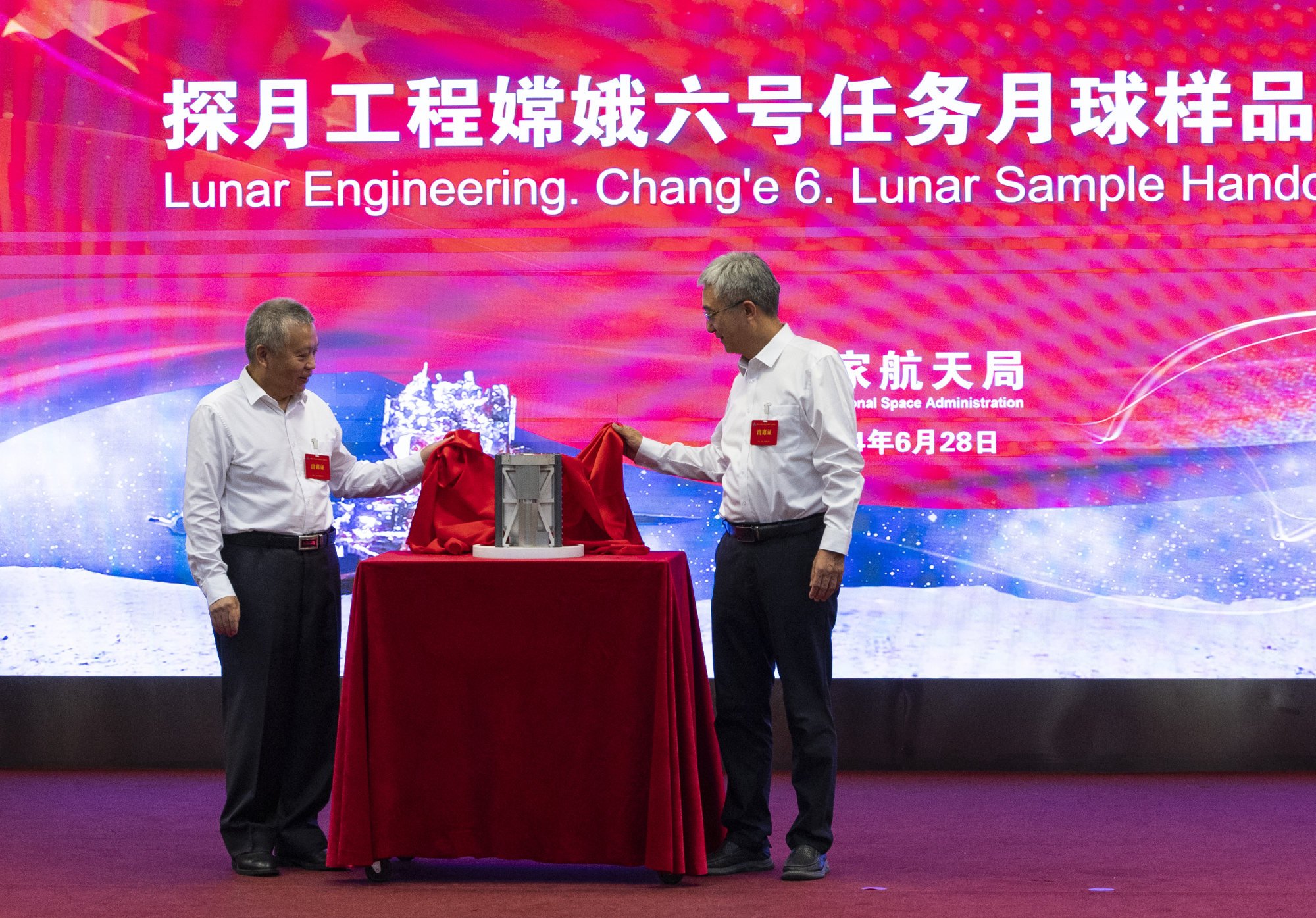For the first time in history, Chinese scientists have revealed what kind of material lies on the far side of the moon – a mixture of basalts and foreign ejecta largely different from the previous Chinese-collected near side samples of mostly basaltic volcanic rocks.
Researchers said the Chang’e-6 mission samples “may result from the mixing of mature lunar soil with freshly ejected materials” given the existence of fresh impact craters around the landing site.
In China’s first analysis of far side lunar samples – published less than three months after the mission brought the material to Earth – the authors said the material showed “distinct characteristics compared to previous lunar samples”, all of which have been collected from the near side of the moon since 1969.
Do you have questions about the biggest topics and trends from around the world? Get the answers with SCMP Knowledge, our new platform of curated content with explainers, FAQs, analyses and infographics brought to you by our award-winning team.
For example, the far side samples contain significantly more light-coloured particles such as glass and feldspar compared to the Chang’e-5 samples from the moon’s near side. The researchers said the material likely originated from ejections or impacts.
The new samples also have a lower density, meaning it “is more loose and porous than previous lunar soils”.
“The lunar sample is quite loose and would be even fluffier in its ‘natural’ state on the lunar surface,” they wrote in an article published in the peer-reviewed journal National Science Review on Monday. The English-language journal is published under the auspices of the Chinese Academy of Sciences (CAS).
The researchers are from the Key Laboratory of Lunar and Deep Space Exploration at the CAS, the Lunar Exploration and Space Engineering Centre, and the Beijing Institute of Spacecraft System Engineering.
The team said the Chang’e-6 samples were “highly significant for scientific research”.
“These local mare basalts document the volcanism history of the lunar far side, while the non-basaltic fragments may offer critical insights into the lunar highland crust, [South Pole-Aitken] impact melts and potentially the deep lunar mantle.”
China this year became the first, and so far only, country to have retrieved samples from the far side of the Earth’s only natural satellite. It collected just over 1.9kg (4.26 pounds) of lunar samples from the South Pole-Aitken basin – the largest, deepest and oldest impact basin on the moon.
The far side, which constantly faces away from us because the moon is tidally locked to the Earth, had remained unexplored, while a total of 10 missions by the United States, the former Soviet Union and China all retrieved samples from the near side.

“Nearside samples alone, without adequate sampling from the entire lunar surface, especially from the far side, cannot fully capture the geologic diversity of the whole moon. This limitation hampers our understanding of the moon’s origin and evolution,” the team said.
“The landing site [of Chang’e-6] holds great scientific value for studying the early impact history of the moon, understanding the composition of the deeper material and exploring the asymmetry between the moon’s near side and far side.”
Natural samples have played a vital role in planetary science research, and new lunar samples often improve existing scientific knowledge.
In 2021, scientists realised that the Chang’e-5 mission had retrieved the youngest rocks ever found on the moon, which had been formed from magma from a volcanic eruption about 2 billion years ago. The discovery updated knowledge gained from the Apollo missions that showed lunar magmatism stopped 3 billion years ago.
The team said this new analysis aimed to “provide foundational data for future in-depth scientific research to be carried out on these newly returned far side samples”.
They said that improving our understanding of areas such as the early evolution of the moon, the lunar magnetic field, and how volcanic activity differs from the near side to the far side could lead to “new concepts and theories of the origin and evolution of the moon”.
Richard de Grijs, a professor in the School of Mathematical and Physical Sciences at Macquarie University in Australia, said that while the first results were considered preliminary, he looked forward to additional analyses that could “lead to a more holistic picture of how the inner solar system came to be”.
“As an astrophysicist, I am most interested in how these results contribute to our understanding of the bigger picture of the evolution of the solar system, and perhaps of planetary systems more generally,” he said.

He said the distinct differences in materials from the two sides of the moon might partly be because of the choice of sampling site.
The South Pole-Aitken basin, as a deep impact crater covering one of the thinnest crust areas on the moon, “could provide access to soil samples from deeper into the crust than the surface samples obtained earlier elsewhere”, he said. But shallower surface samples were not yet available from the far side.
“Having said that, the far side of the moon is always oriented away from Earth, and so it is subject to a higher frequency of impacts than the near side.
“Far side soil samples will include material from the surface as well as deeper samples from ejecta and impacts, which will – by definition – result in different chemistry and compositions than shallower surface samples from the near side.”
More from South China Morning Post:
- How China’s Chang’e-5 lunar probe and 3 glass beads rewrote the moon’s geological past
- Details of China’s lunar station revealed as project expands with a dozen new partners
- Chinese astronauts will test sample bricks for moon research base
- Chinese scientists devise method to get water from the moon’s surface
For the latest news from the South China Morning Post download our mobile app. Copyright 2024.





